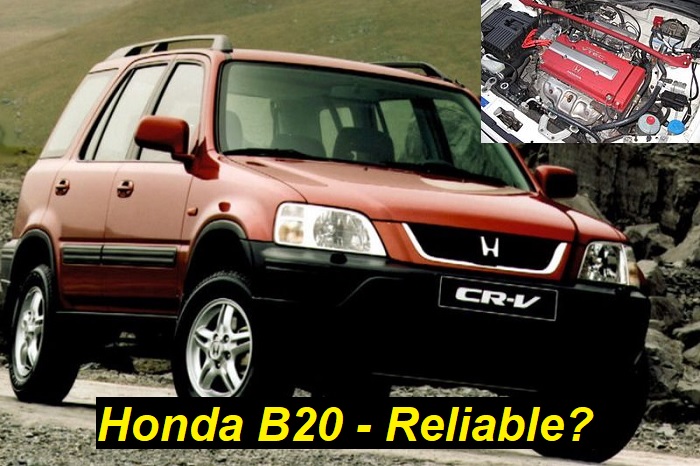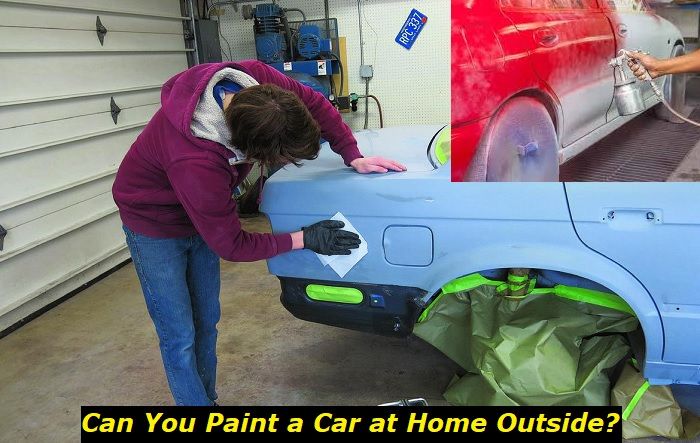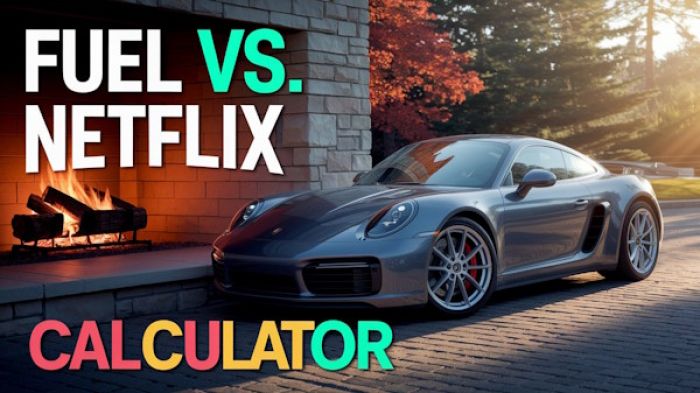Honda engines are legendary. Especially if we talk about the 1990s when this company started its development all over the world. The technologies that were used in Honda engines and transmissions were all very reliable, durable, and repairable. Some of these engines were used as role models for many other worldwide known companies when they were engineering their new technologies.
Today, we'll be speaking about the Honda B20 engine series. This series includes a couple of engines that share the same block but have some differences in valve system, timing system, head construction, etc. This engine is mostly known among Americans to be used in the first-generation Honda CR-V. And we also know this unit thanks to some JDM cars.

Key features and my opinion about the engine
- Production years:1995-2002
- Average lifespan of B20:220,000-250,000
- Fuel supply type:port injection
- Power range:125-150 hp
- Fuel efficiency:bad
- Engine block material:aluminum
- Engine reliability score:high
- The most common problems:oil leaks, thermostat and water pump problems, head gasket issues, no lifters.
Honda B20 engine - anything interesting?
So, these engines were first introduced in 1995 with the Honda CR-V (the first generation) both in America and in Japan. The engine had a lot of indexes like B20B, B20B4, B20Z, B20Z2, etc. Basically, these engines don't differ much from each other, so the indexes were used mainly for some inner distinguishing in the company. The engine obviously has a 2-liter displacement (1973 cc, to be precise).
This is a classic engine with simple construction. It doesn't use the Honda VTEC technology. The fact that the engine is not a complicated unit is very good now when all of these engines have high mileage and are about to die. You can actually repair this engine without spending a lot of money.
Here are some features you should know about the B20 unit:
- this is a non-VTEC engine which is good news for people who know how hard it is to repair the VTEC system;
- the B20 engines have power between 125 and 150 horsepower which is not bad for a 2-liter engine of that time;
- also, the engines have decent torque which is available at approximately 4000 RPM at its maximum;
- in 1999, Honda changed the engine construction a little and the B20Z engine was the main engine for the USDM Honda CR-V;
- the first engines had a relatively low compression of 8.8:1 while the newer engines had 9.6:1 which should have changed the power but it didn't.
Actually, for 1995, it was a very capable and technological engine. That's why the first-gen CR-V became a very popular SUV on the market. Both American and Japanese buyers were glad to get this car. And now, after over 27 years, we see that their decision to buy this vehicle was absolutely correct.
This engine proved to be one of the best Honda engines ever. It was the base engine for many other naturally aspirated units by Honda. Although it was a unit with simple construction, it appeared to be much better than nearly all American (USDM) engines by Ford, Chevy, and Chrysler.
What are the problems of the B20 engine?
Nothing is ideal, so we decided to find the most important downsides of the B20 engine. Of course, now, after 27 years of its first appearance on the market, we know everything about this engine and we can tell you a lot of bad things. But be sure that any modern engine in 20 years will be seen as an outdated piece of aluminum.
By the way, the B20 engines were made of aluminum - both the engine block and the head. This is a downside because at high mileage you aren't able to bore out the block and install another size of pistons to prolong the life of the engine.
Here are some other problems you can face if you own a car with a B20 engine:
- No hydraulic compensators. This means that every 20 000 miles you will need to pay for valve system settings.
- Ecology. This engine is not very ecological. In Europe, it's considered to fall into the Euro-3 category which is not good at all.
- Fuel consumption. In the city traffic, your CR-V with an automatic transmission is likely to show around 15 MPG which is not good at all for such a small SUV. Even the manual gearbox doesn't save the situation much.
- Oil seals are the part of owner's life. You will constantly find a lot of drops just because the engine is old and the seals fail constantly.
- The oil pump and thermostat are not very durable. You will need to replace them regularly to ensure that the engine cooling works well. Otherwise, overheating will kill the engine very fast.
- Head gasket is at risk after 150 000 miles. The problem happens just unexpectedly and it means that you need to pay quite a lot of money to replace the gasket. Otherwise, big problems will come.
- The timing belt is another weak link in the system. It may fail unexpectedly and destroy the valve system in your engine heads.
It's not correct to say that the Honda B20 engine is very problematic. But it can show some problems at high mileage. Given these engines haven't been sold since 2001, the youngest unit is more than 20 years old. Engines at this age will always show many problems.
But if the mileage is not that huge, you can still drive your CR-V or a JDM car with this engine and enjoy its reliability. We recommend servicing the engine more often than required and also using expensive oil. Bad oil will probably kill this engine earlier than you expect.
What's the longevity of the B20 engine?
Now we have a lot of data to realize that the longevity of the B20 engine is quite good. You will be able to drive a car with this engine under the hood for about 220 000 miles. This is the average longevity in the US.
But let's look at some car geeks who have been driving their first-gen CR-Vs since 1995-2000. They claim to have driven 400 000 miles and more. This is possible for this engine just because you can repair it and you can bring it back to life.
Here's something you should do to ensure that the engine lives long life:
- change oil every 6000-7000 miles and use original Honda oil or something like this, not some bad and cheap oil;
- regularly set the valves - every 20 000 miles you will have to do it to ensure that the engine works properly;
- forget about some bad fuel - this engine hates bad fuel and starts malfunctioning immediately if you don't use good gasoline;
- make sure the engine doesn't overheat - this is important because overheating brings to problems with the engine head and head gasket;
- don't rev up the engine too much - the red point is 6300 RPM but you shouldn't often come to this point, drive at 2200-3000 RPM;
- warm up your engine before you drive in the morning - at least 2 minutes will be OK, this engine is old and needs warming up.
You will need to ensure that all the systems of the engine work properly. Cooling system, fuel injection, catalytic converter, spark plugs, etc. - all of these should work properly. No way you will drive your Honda for more than 200 000 miles if you don't follow these tips.
Repair problems of the Honda B20 engine
You know that repairing a Honda car is not a very pleasant task. Finding good and affordable parts is something impossible. When it comes to an old B20 engine, repairing it is a disaster. You will not find many original parts. But the aftermarket parts are not very reliable and not very durable.
This problem is huge, and we know that some owners of the first-gen Honda CR-Vs have to try and find used parts at scrapyards or at eBay which takes a lot of time.
You may think that owners have problems with labor. But it's not true. Any Honda dealer can repair this engine. Also, many garages will easily repair this engine because it has a simple construction and is not very hard to take apart and then reassemble using new parts even after very bad breakdowns.
Final words
Unfortunately, the B20 engine series was discontinued in 2001 and it was replaced by the newer and more ecological engines. Now, these units are still popular because they are durable, relatively problem-free. They give wonderful longevity and offer optimal maintenance costs. Even though these engines burn a lot of gasoline, they will not take money out of your pockets during repairs.
Though, you need to understand that these engines are old and they have high mileage. This leads to unpredictable problems and can even lead to the unexpected death of the unit.
About the authors
The CarAraC research team is composed of seasoned auto mechanics and automotive industry professionals, including individuals with advanced degrees and certifications in their field. Our team members boast prestigious credentials, reflecting their extensive knowledge and skills. These qualifications include: IMI: Institute of the Motor Industry, ASE-Certified Master Automobile Technicians; Coventry University, Graduate of MA in Automotive Journalism; Politecnico di Torino, Italy, MS Automotive Engineering; Ss. Cyril and Methodius University in Skopje, Mechanical University in Skopje; TOC Automotive College; DHA Suffa University, Department of Mechanical Engineering






Add comment